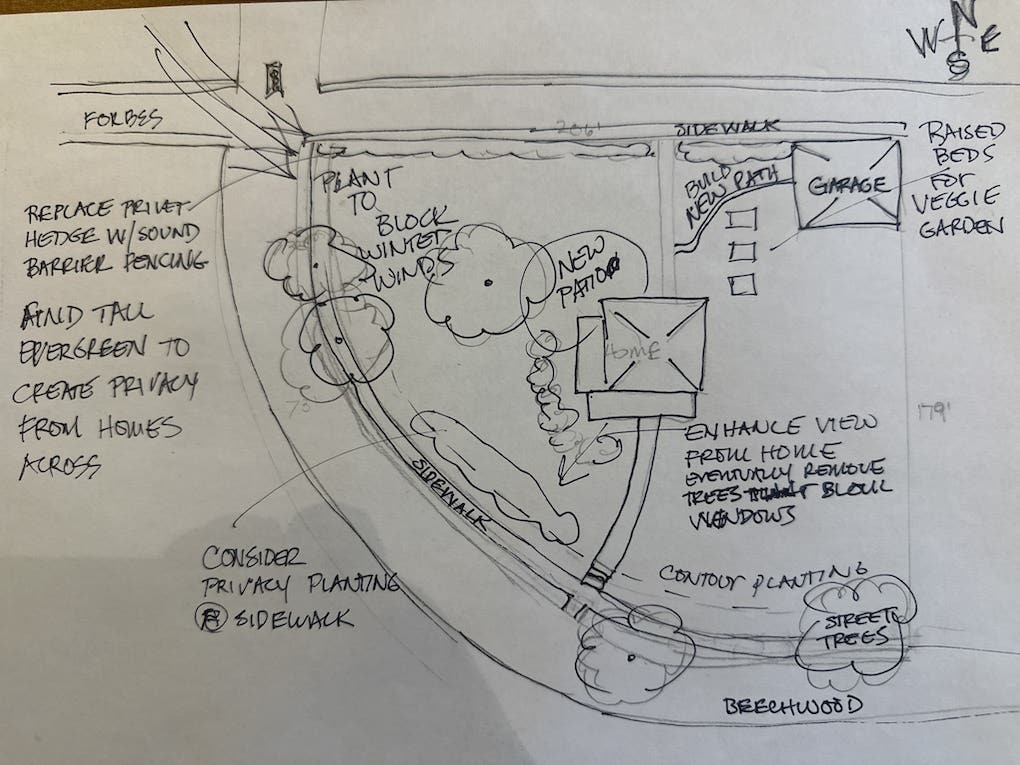Take Me Out to the Ball Game & the Garden
Home runs mingle with horticulture at San Francisco’s AT&T Park, especially during the 7th inning stretch when the crowd sings “Take Me Out to the Ball Game” and some fans wander to the garden in the outfield.
Article by Pam Peirce | All photographs by David Goldberg
Home runs mingle with horticulture at San Francisco’s AT&T Park, especially during the 7th inning stretch when the crowd sings "Take Me Out to the Ball Game" and some fans wander to the garden in the outfield.
Baseball fans generally don’t think of the ballpark as the site of a garden, but there is one at AT&T Park, home of the San Francisco Giants. The favorite vegetable of Giants outfielder Hunter Pence is kale, so there is plenty of it growing in the garden. Staff call it the garden’s “totem plant.” They also like to grow anything orange, from tomatoes or peppers to violas and marigolds, since the team’s colors are orange and black. Edibles growing during a December visit included cauliflower, celery, bok choy, endive, radish, turnips, lettuce, blueberries, strawberries and herbs. In summer the garden offers tomatoes, peppers, eggplants and sunflowers.
Anyone with a ticket is welcome in this beautiful garden from two hours before a game to the game’s end. It’s located under the scoreboard, back of centerfield, and it sometimes appears during televised games, in the foreground of wide shots that include the field.
While they’re in the garden, fans can watch the game through openings in the fence separating it from the field or on any of six big screen televisions. They can also purchase food and beverages to eat in the garden or take back to their seats. There are two bistros, one on each side, and a bar in the center. One bistro serves flatbread pizza in a menu that includes no gluten-containing ingredients. The other serves a vegan menu of smoothies, salads, sandwiches and seasonal shortcake. The bar supplies both beer and cocktails.
The Garden at AT&T Park
AT&T Park, a handsome, retro-styled brick stadium, was built in the year 2000 in the northeast corner of San Francisco. It is so near the Bay that kayakers and boaters hover in the water hoping to retrieve a ball from a “splash home run.”
The Garden at AT&T Park was the idea of Fedele Bauccio, the CEO of Bon Appétit, a food-service company based in Palo Alto, Calif. The company has created more than 650 restaurants in 31 states, sometimes with gardens, in special venues such as universities, museums and corporate centers. This garden, which opened mid–baseball season in 2014, is the first one they’ve built in a ballpark.
One challenge in designing the garden was that the area had been used to store the batting-practice cage. There was nowhere else to put it, so this large U-shape structure was incorporated into the plan. A gate in the wall lets it be rolled onto the field when it’s needed. A second design challenge was that home-run balls could land in the garden, a hazard to plants and visitors. Because of this, a net was stretched over the garden. Any balls that arrive slide down the net to the grassy area near the wall, where fans can perform the traditional scramble for possession. The ballpark staff call those a “vinaigrette-splash home run.”
There are 44 aeroponic towers in the garden, where salad greens and strawberries grow with their roots anchored in bits of rock wool. Water recirculates constantly through the five-foot, eight-inch-tall tubes, which produce crops using ninety percent less water than in-ground plants. Lettuce is ready in six weeks, chard in twelve. Gardeners clean the towers once a month and spray water and neem oil to curb aphids.
Outreach in the Outfield
There is at least one other garden in an American ballpark: Fenway Farms, in Boston. But it’s not open to the public, and it doesn’t have public programs, another difference.
The San Francisco garden hosts children from schools and agencies, one group a week, for a two-hour program that includes a short video starring Hunter Pence; a plant-finding exercise; a harvesting, cooking and eating experience; and education about nutrition. Program Manager Allison Campbell says, “The Giants are heroes to the children and the garden uses that excitement toward healthy living and nutrition.” On the day this story’s photographer visited, there were 45 children between the ages of 5 and 12 from the Palo Verde Kids’ Club. They played Garden Bingo, a plant identification game, and harvested radishes to make radish salsa. They tasted heirloom apples and heard the story of Johnny Appleseed.
A tasting bed gives children a chance to experience a range of plant flavors. Younger children tend to prefer the startlingly sweet leaves of stevia, calling it “candy leaf.” With their more sophisticated palates, high schoolers often find the sour leaves of French sorrel more interesting.
Sam Wilder, the Program Coordinator, says that because the garden’s strongest focus is education, not production, they don’t measure the harvest. He says what makes him happiest about the garden is that “it has so many eyes on it. More people see this garden in one day than most gardens will see in their entire existence.”
Pam Peirce's gardening column appears monthly in the San Francisco Chronicle and at sfgate.com. David Goldberg is an award-winning garden and landscape photographer based in the Bay Area.
This story appeared originally in the March/April 2018 issue Horticulture which you can download here.







